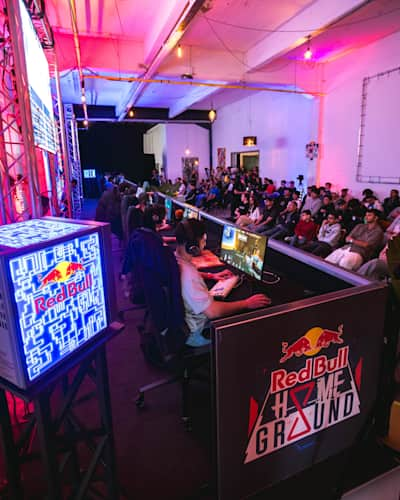Gaming

Esports
Lock and load: a history of VALORANT's ascent to the top
It's been a long road to make VALORANT the beast of a game that it is today. From development to Ignition and beyond, this is its story.
01
The genesis of VALORANT: from Project A to release
It all started back in 2014, with the code name Project A being whispered in corridors of Riot Games' Los Angeles headquarters.
Game director Joe Ziegler had the initial idea and developed it with David Nottingham, Trevor Romleski, Moby Francke and Salvatore Garozzo, a former pro player and map designer for Counter-Strike: Global Offensive. The team hid away, working in their offices for years until the secret project was perfected.
By October 2019, a closed beta period began, with limited access opened up in April 2020. The hype was well and truly underway.
Then, finally, Project A was released into the world on June 2, 2020 as VALORANT. The problem was, this initial release was for Windows only, meaning Xbox Series X/S and Playstation 5 players had to wait four years until June 2024 to play on their preferred console.
02
The evolution of VALORANT gameplay
VALORANT was developed to make tactical shooters and e-sports more accessible to new players – and to attract a large competitive scene. In pre-release interviews, Ziegler said the game was for both people playing their first tactical shooter and professional players, with accessibility a huge priority.
As such, the game was developed using Unreal Engine 4 to allow a focus on gameplay and optimisations, instead of having to worry about core systems. Low minimum hardware requirements also meant more players could get involved.
New patches that include new maps, Agents and mods to make gameplay even smoother are typically released every two weeks. Cosmetics and weapons are also constantly being updated across all game types, with a recent patch in June focused on balancing Agents and weapons to keep the gameplay engaging and equally challenging to all players.
03
VALORANT esports: a meteoric rise
The very first competitive event launched by Riot Games was Ignition in 2020: a series of tournaments created in partnership with players, teams, content creators and tournament organisers from all over the world that focused on building the VALORANT competitive ecosystem. Prize pools for individual series finals ranged from a $5,000 to a whopping $50,000 prize pool.
Riot Games announced the first VALORANT Champions Tour in November of the same year, dividing the tournament into a trilogy of tiers: Challengers, Masters and Champions.
VALORANT tournaments like Red Bull Home Ground pack out huge venues
© Suguru Saito/Red Bull Content Pool
Challengers, the lowest tier, covered North America, Brazil, Latin America, EMEA, Southeast Asia, Korea and Japan. Beat Challengers and you'd move to Masters, with the top 16 teams advancing to Champions, the final tournament of VCT.
Over 10,000 teams competed in the VCT in 2021, capturing its highest viewership at the Reykjavik Masters tournament in May with 1,085,850 people watching.
VALORANT was well on its was to dominating the esports landscape, but there were still changes to come.
Red Bull Campus Clutch is a global tournament for college VALORANT teams
© Graeme Murray/Red Bull Content Pool
2023 to the present saw a new format announced, with the season split into three international regions: Americas, EMEA and Pacific. Instead of Challengers, each would have an International League that could then qualify for Masters and Champions. Then, in 2024 a fourth regional league was launched in China and VALORANTs popularity continued to snowball. Currently, the event format sees 30 teams selected, with 10 teams per region. Non-partner teams can compete in Ascension events, with one winner per sub-region advancing to the respective International Leagues.
Then, of course, there’s Red Bull Home Ground, where the world's top VALORANT teams unite for an off-season tournament designed to drape existing champions and aspiring stars in glory.
04
Shaping the game: the impact of key players
Pioneering playstyles: dominant duelists and strategic minds
Naturally, the teams with the best tactics stand the best chance of winning in VALORANT. There are many, many factors contributing to this, but your choice of Agent can definitely set you on the right path.
The discussion over the dominant duelists in the game is fraught, but Reyna’s Leer ability to blind enemies is pretty useful, while Raze can deal pretty solid damage. No wonder they're arguably the strongest duelists in the game. Neon is also a favourite, with her High Gear sprint and slide allowing her to catch opponents off guard.
As for strategies, they vary from map to map, team to team and player to player. One key piece of advice: whatever the mission, always try to catch your opponent off guard.
Clutch masters: players who've defined VALORANT history
The four years of competitive VALORANT have only seen standards soar, as players and teams sharpen their edges to really push the game forward in fresh and exciting ways. Each player will have their own favourite memories, but these are a few of ours.
Red Bull Home Ground 2023 saw a massive upset when British team Fnatic dominated five other crews after three days of intense battle across numerous maps. They claimed their win despite close competition from FUT, who kicked things off with a 13-3 win over 2022 winners 100 Thieves.
The longest competitive match in VALORANT history saw Gen.G and TSM battle for 58 rounds in Stage 3 of the Champions Tour North America in 2022. It was a gruelling match for all involved, but in the end, TSM edged out Gen.G with a score of 31-27.
Meanwhile, a player by the name of Individual-Ad6941 has reportedly racked up an historic 61 kills in a single game, with 17 deaths and 9 assists. There are also rumours on the message boards that a player known as Emreinnowgame once bagged a mind-blowing 136 kills in one game. Even unofficial competitions like this are just part of the reason why VALORANT remains so popular among players of all abilities.
As for peak viewers, the March 2023 VCT LOCK//IN showdown was only 60,000 viewers short of the all-time record, the VALORANT Champions 2022 final between LOUD and OpTic, which saw over 1.5 million viewers tune in.
05
The future of VALORANT: what's next?
VALORANT continues to evolve and the most recent update, Patch 9.01, saw animation updates for the Outlaw weapon, the removal of a bug that saw Neon equip weapons faster than intended and a clean-up of the Abys map to generally improve flow.
As for the future of the game, as well as expanding into China and reaching ever more players through Ascension events, Riot Games have promised the Pick 'Ems Beta will be coming in time for VALORANT Champions 2024.
What this means is that starting July 26, you'll have access to the Champions Seoul Group Stage in-client and on the web, and can gain points for guessing the exact placement of advancing teams, earn exclusive rewards for playing and see how you stack up against other creators.
With the game constantly evolving to bolster inclusivity, innovation and experimentation, VALORANT really is a game that continues to grow with its players.












